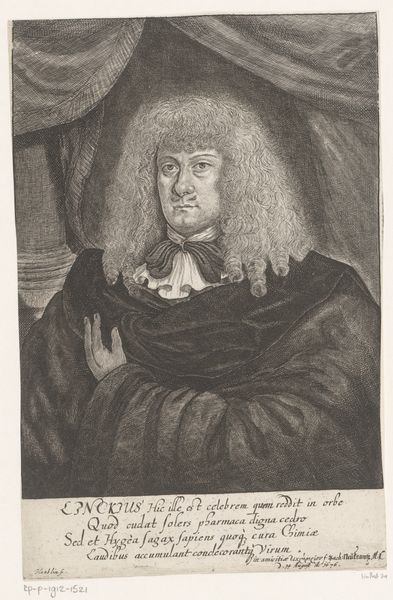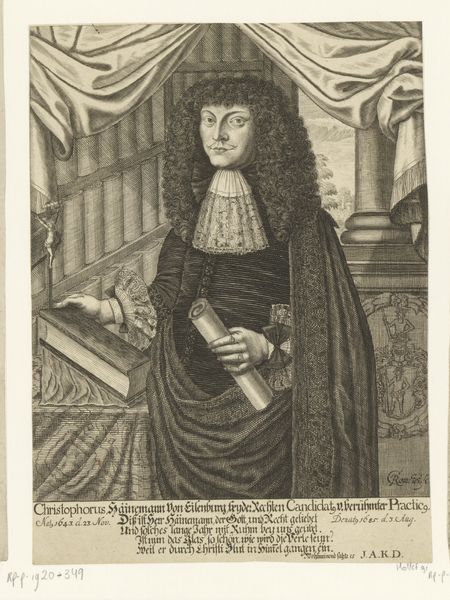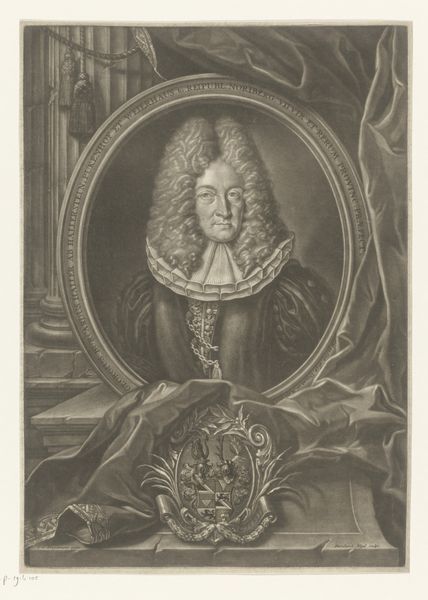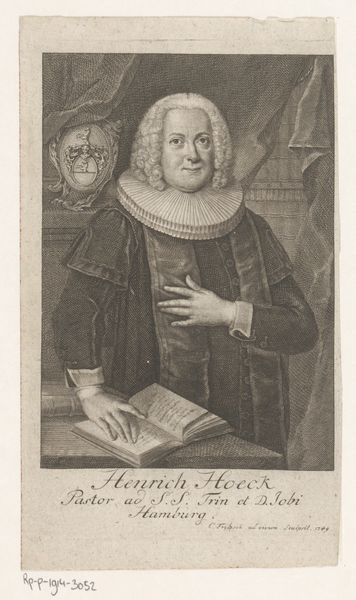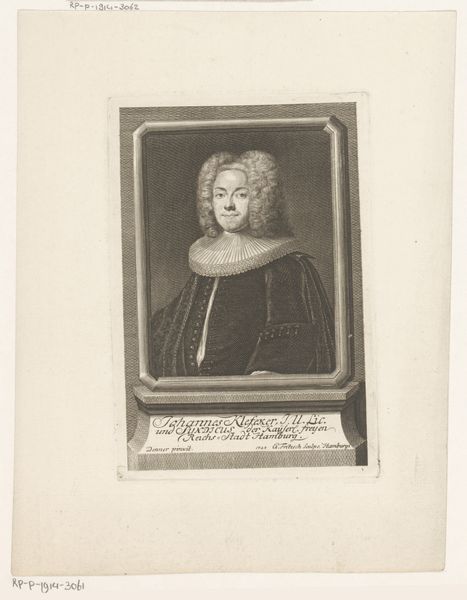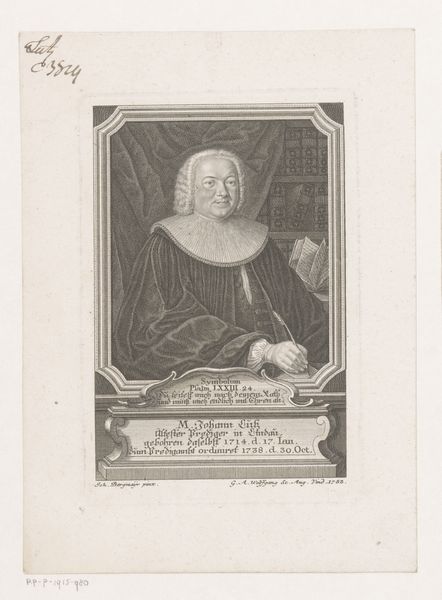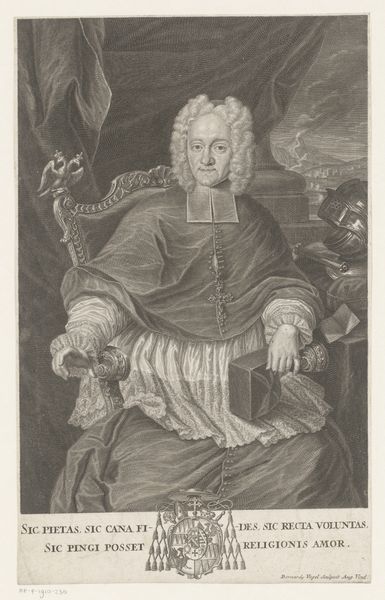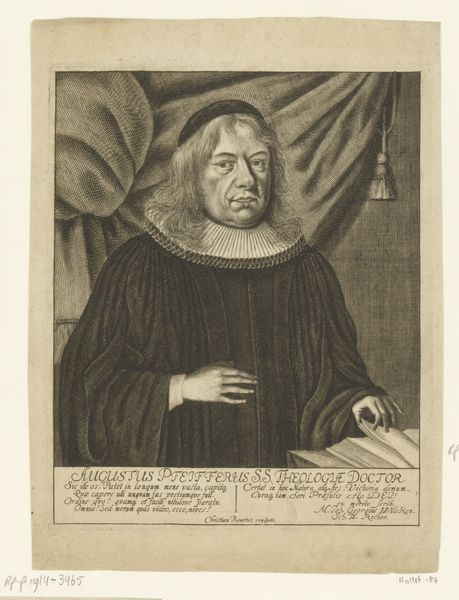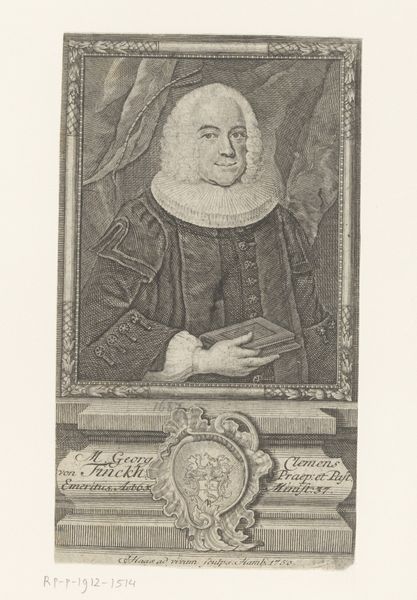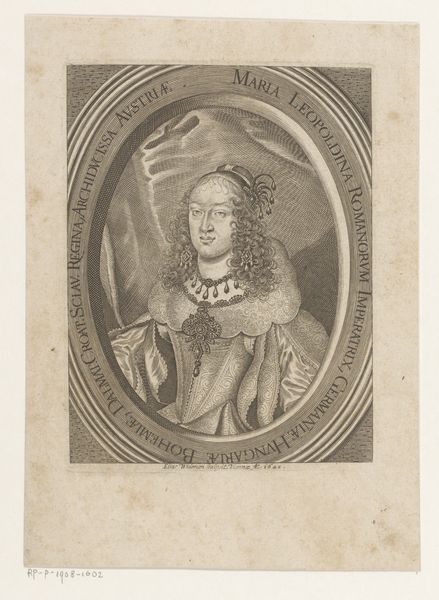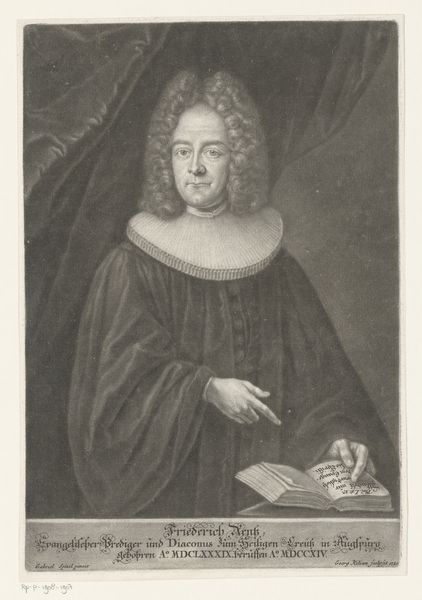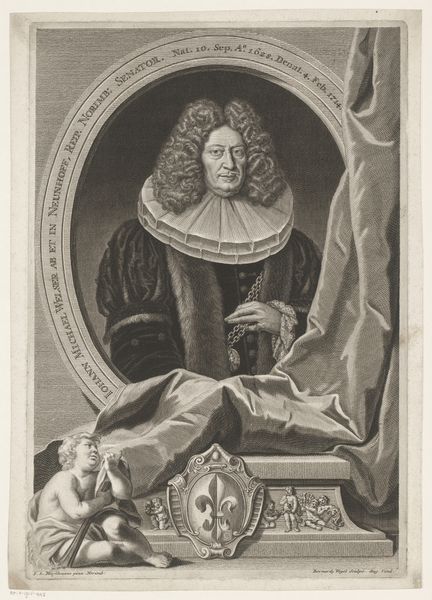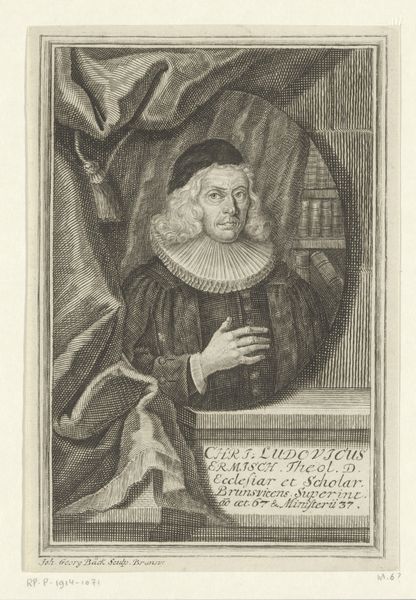
print, engraving
#
portrait
#
baroque
# print
#
portrait drawing
#
history-painting
#
engraving
Dimensions: height 385 mm, width 226 mm
Copyright: Rijks Museum: Open Domain
Curator: Take a moment to look at this print, titled "Portret van Augustin Strauch," likely created between 1674 and 1685 by Nicolaus Häublin. What's your first impression? Editor: I'm immediately struck by the dramatic contrasts—the bold blacks and soft grays create a rather stately, formal impression. And, wow, that wig. It really defines the composition. Curator: Indeed. This is a portrait in the Baroque style, so drama is very much a part of the artistic aim. Consider who Augustin Strauch was: a highly influential lawyer and diplomat in the service of Saxony. His dress, his confident posture, and yes, that striking wig—they all speak to the assertion of power and status so central to the period. Editor: Focusing on the purely visual aspects, there's also a great deal of attention given to texture. You have the billowing softness of the wig contrasted against the smoother, almost reflective surfaces of his garments. It provides visual depth, don't you think? Curator: Absolutely, and that gets to how individuals like Strauch were perceived. Think about the period—the aftermath of the Thirty Years' War, the consolidation of power in centralized states. To have one's portrait engraved and distributed was a powerful act of self-representation and an appeal to legacy. It solidifies the power dynamic. Editor: There is the Latin text, of course, adding to the formal construction of the portrait; notice how it is displayed. Almost like architectural structure. Curator: The use of engraving as a medium itself reinforces that. Each precisely etched line contributes to the overall effect of controlled authority, which would resonate with the print’s intended 17th-century audience. Editor: It also demonstrates how seemingly disparate artistic elements like style and historical context unite to amplify the portrait's powerful aura. Curator: Right. We move beyond just admiring Strauch’s likeness. This piece allows us to view the intersection of artistic skill, material culture, and the politics of identity and class during the Baroque era.
Comments
No comments
Be the first to comment and join the conversation on the ultimate creative platform.
